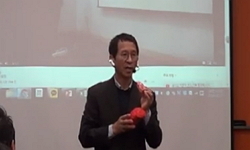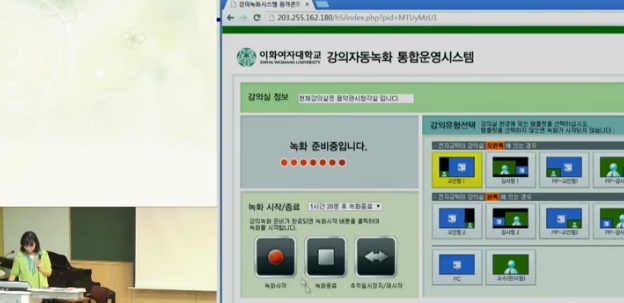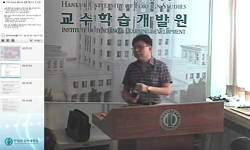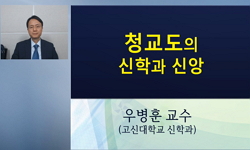The aim of this article is to research Luther’s reformation hymn “Nun freut euch, lieben Christen g’mein” and its theological and historical meaning in terms of hymn as a medium of proclamation of the gospel. This hymn was one of Luther’s ea...
http://chineseinput.net/에서 pinyin(병음)방식으로 중국어를 변환할 수 있습니다.
변환된 중국어를 복사하여 사용하시면 됩니다.
- 中文 을 입력하시려면 zhongwen을 입력하시고 space를누르시면됩니다.
- 北京 을 입력하시려면 beijing을 입력하시고 space를 누르시면 됩니다.
https://www.riss.kr/link?id=A107061539
-
저자
권진호 (목원대학교)
- 발행기관
- 학술지명
- 권호사항
-
발행연도
2020
-
작성언어
Korean
-
주제어
루터 ; 종교개혁 ; 찬송 ; 칭의론 ; “다함께 즐거워하라” ; Luther ; Reformation ; hymn ; Justification ; “Nun freut euch ; lieben Christen g’mein”
-
등재정보
KCI등재
-
자료형태
학술저널
-
수록면
39-66(28쪽)
-
KCI 피인용횟수
0
- DOI식별코드
- 제공처
- 소장기관
-
0
상세조회 -
0
다운로드
부가정보
다국어 초록 (Multilingual Abstract)
The aim of this article is to research Luther’s reformation hymn “Nun freut euch, lieben Christen g’mein” and its theological and historical meaning in terms of hymn as a medium of proclamation of the gospel. This hymn was one of Luther’s earliest hymns. We can find that it is, despite of hymn, a meaningful and accurate testimony of Luther’s theology (shown in Luther’s theological work). This hymn typically represents christian soteriology in line with Luther’s theology of justification. This hymn is a spiritual hymn that proclaims very clearly how a sinner comes to grace and reaches salvation.
It is clear that this hymn serves as a medium of propaganda of the Reformation and the gospel. In other words, Luther’s hymn was a sung propaganda for the Reformation. If the Reformation is recognized as a ‘preaching revival movement,’ it would not be an exaggeration to say that the early Reformation was a ‘hymnal movement.’ The essence of evangelical faith was proclaimed through song impressively and at the same time individually appropriated. This hymn, which effectively conveyed the evangelical teachings, was a “by song proclaimed gospel” and at the same time a “Reformation hymn,” promoting and maximizing Luther’s Reformation and its teachings.
국문 초록 (Abstract)
“이제 다함께 즐거워하라”는, 찬송임에도 불구하고 (루터의 신학적인 작품에 나타난) 루터의 신학을 의미 있고도 정확하게 증언하고 있으며 루터의 신학의 핵심인 칭의론과 일치하여 기...
“이제 다함께 즐거워하라”는, 찬송임에도 불구하고 (루터의 신학적인 작품에 나타난) 루터의 신학을 의미 있고도 정확하게 증언하고 있으며 루터의 신학의 핵심인 칭의론과 일치하여 기독교의 구원론을 전형적으로 표현하고 있다. 물론 칭의라는 개념을 실제 언급하고 있지는 않지만, 칭의론은 찬송 전체에 내용적으로 녹아 있다. 이 찬송이야말로 죄인이 어떻게 은혜를 받고 구원에 이르게 되는지를 아주 명료하게 선포하는 영적인 찬양이다. 그런데 루터는 2-10절에서 일인칭을 사용함으로 종교개혁적인 믿음에 이른 자신의 개인적인 길을 서술하여 하나님의 은혜에 대한 개인적인 체험을 이 찬양을 하는 모든 그리스도인에게 이해하도록 하였다. 보편적인 구원의 역사를 개인에게 적용하고 이 구원의 체험이 이것을 찬양하는 각 개인의 체험이 되도록 한 것이다. 인간의 구원에 대한 하나님의 결정에 의한 구원의 역사는 성부와 성자와의 대화, 그리고 성자와 찬송의 화자와의 대화로 서술된다. 내용 측면에서 볼 때 이 찬송은 전체적으로 칭의론을 다루고 있는 신학 작품처럼 복음을 말하는 바울 신학을 멜로디와 가사로 표현하되, 근본적으로 성서의 구절들(무엇보다도 로마서)에 대한 시적(詩的) 주석이라고 할 수 있다.
참고문헌 (Reference)
1 김문기, "루터의 찬송과 종교개혁" 5 : 328-350, 2002
2 마틴 루터, "루터와 기도한다" 대장간 2019
3 권진호, "루터, 구원을 설교하다" 대장간 2020
4 권진호, "그리스도의 싸움과 승리-그리스도의 십자가와 부활의 설교자 루터" 한국기독교학회 (65) : 63-82, 2009
5 Jung, Alfred, "‘Nun freut euch, lieben Christen gmein.’ Eine theologische Untersuchung des Lutherliedes" 19 : 200-209, 1975
6 Barth, Hans-Martin, "Zur inneren Entwicklung von Luthers Teufelsglauben" 13 : 201-211, 1967
7 Leaver, Robin A., "The Pastoral Luther. Essays on Martin Luther’s Practical Theology" Wm. B. Eerdmans Publishing 271-291, 2009
8 Dingel, Irene, "Reformation. Zentren – Akteure – Ereignisse" Vandenhoeck & Ruprecht 2016
9 Führer, Werner, "Reformation ist Umkehr. Rechtfertigung, Kirche und Amt in der Reformation und heute – Impulse aus kritischer Gegenüberstellung" Vandenhoeck & Ruprecht 2016
10 Iwand, Hans J., "Rechtfertigungslehre und Christusglaube – eine Untersuchung zur Systematik der Rechtfertigungslehre Luthers in ihren Anfängen" WBG 1966
1 김문기, "루터의 찬송과 종교개혁" 5 : 328-350, 2002
2 마틴 루터, "루터와 기도한다" 대장간 2019
3 권진호, "루터, 구원을 설교하다" 대장간 2020
4 권진호, "그리스도의 싸움과 승리-그리스도의 십자가와 부활의 설교자 루터" 한국기독교학회 (65) : 63-82, 2009
5 Jung, Alfred, "‘Nun freut euch, lieben Christen gmein.’ Eine theologische Untersuchung des Lutherliedes" 19 : 200-209, 1975
6 Barth, Hans-Martin, "Zur inneren Entwicklung von Luthers Teufelsglauben" 13 : 201-211, 1967
7 Leaver, Robin A., "The Pastoral Luther. Essays on Martin Luther’s Practical Theology" Wm. B. Eerdmans Publishing 271-291, 2009
8 Dingel, Irene, "Reformation. Zentren – Akteure – Ereignisse" Vandenhoeck & Ruprecht 2016
9 Führer, Werner, "Reformation ist Umkehr. Rechtfertigung, Kirche und Amt in der Reformation und heute – Impulse aus kritischer Gegenüberstellung" Vandenhoeck & Ruprecht 2016
10 Iwand, Hans J., "Rechtfertigungslehre und Christusglaube – eine Untersuchung zur Systematik der Rechtfertigungslehre Luthers in ihren Anfängen" WBG 1966
11 Hahn, Gerhard, "Mit Lust und Liebe singen. Lutherlieder in Porträts" Vandenhoeck & Ruprecht 24-30, 2017
12 Heidrich, Jürgen, "Meilensteine der Reformation" Gütersloher Verlagshaus 200-206, 2014
13 Nehlsen, Eberhard, "Meilensteine der Reformation" Gütersloher Verlagshaus 207-216, 2014
14 Rieger, Reinhold, "Martin Luthers theologische Grundbegriffe" Mohr Siebeck 2017
15 Luther, Martin, "Martin Luthers Werke. Kritische Gesamtausgabe" Hermann Böhlau 1883
16 정병식, "Martin Luthers Theologie: Vergegenswaertigung" 공감마을 2018
17 Schwarz, Reinhard, "Martin Luther. Lehrer der christlichen Religion" Mohr Siebeck 2015
18 Hahn, Gerhard, "Martin Luther. Die deutschen geistlichen Lieder" Max Niemeyer 1967
19 Schilling, Johannes, "Martin Luther" Carus-Verlag 2017
20 Leaver, Robin A., "Luther’s Liturgical Music. Principles and Implications" Wm. B. Eerdmans Publishing 2007
21 Jenny, Markus, "Luther, Zwingli, Calvin in ihren Liedern" Theologischer Verlag 1983
22 Schilling, Johannes, "Luther Handbuch" Mohr Siebeck 236-244, 2005
23 Marti, Andreas, "Kirchenlied" 4 : 1209-1225, 2001
24 Becker, Hansjakob, "Geistliches Wunderhorn. Große deutsche Kirchenlieder" C. H. Beck 2009
25 Brecht, Martin, "Erfahrung – Exegese – Dogmatik. Luthers Lied ‘Nun freut euch, lieben Christen gmein" 32 : 94-104, 1990
26 Rieske-Braun, Uwe, "Duellum mirabile. Studien zum Kampfmotiv in Martin Luthers Theologie" Vandenhoeck & Ruprecht 1999
27 Köhler, Rudolf, "Die biblische Quellen der Lieder" Vandenhoeck & Ruprecht 1965
28 Althaus, P., "Die Theologie Martin Luthers" Gütersloher Verlagshaus 1962
29 Veit, Patrice, "Das Luther-Lexikon" Bückle & Böhm 385-389, 2015
30 Evangelisches Gesangbuch, "Ausgabe für die Evangelische Kirche von Kurhessen-Waldeck" Verlag Evangelischer Medienverband 2003
동일학술지(권/호) 다른 논문
-
파울 첼란의 시 “테네브래 TENEBRAE”에 나타난 기독론
- 연세대학교 신과대학 연합신학대학원
- 황성하
- 2020
- KCI등재
-
- 연세대학교 신과대학 연합신학대학원
- 조미영
- 2020
- KCI등재
-
- 연세대학교 신과대학 연합신학대학원
- 전인수
- 2020
- KCI등재
-
- 연세대학교 신과대학 연합신학대학원
- 이인수
- 2020
- KCI등재
분석정보
인용정보 인용지수 설명보기
학술지 이력
| 연월일 | 이력구분 | 이력상세 | 등재구분 |
|---|---|---|---|
| 2022 | 평가예정 | 재인증평가 신청대상 (재인증) | |
| 2019-01-01 | 평가 | 등재학술지 유지 (계속평가) |  |
| 2016-01-01 | 평가 | 등재학술지 유지 (계속평가) |  |
| 2012-01-01 | 평가 | 등재학술지 선정 (등재후보2차) |  |
| 2011-01-01 | 평가 | 등재후보 1차 PASS (등재후보1차) |  |
| 2009-01-01 | 평가 | 등재후보학술지 선정 (신규평가) |  |
학술지 인용정보
| 기준연도 | WOS-KCI 통합IF(2년) | KCIF(2년) | KCIF(3년) |
|---|---|---|---|
| 2016 | 0.34 | 0.34 | 0.38 |
| KCIF(4년) | KCIF(5년) | 중심성지수(3년) | 즉시성지수 |
| 0.36 | 0.33 | 0.816 | 0.11 |




 DBpia
DBpia







